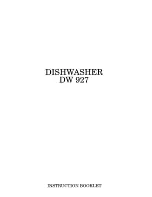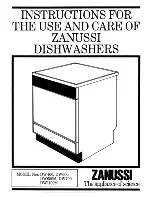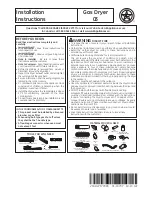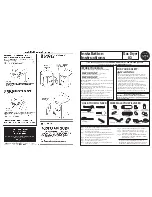
8
Hand Washables cycle
This cycle features a series of brief, low speed agitations and
short soaks to gently clean special-care items. Low spin speeds
minimize wrinkling. Wash small loads. If items appear to be
floating (due to trapped air), stop the washer by pushing in the
Cycle Control knob. Push items down into the washer. Pull out
the Cycle Control knob to restart the washer.
Rinse and Spin
When using extra detergent for heavily soiled clothes, or washing
special-care items, you may find an extra rinse and spin is
needed.
1.
Push in the Cycle Control knob and turn it clockwise to any of
the Rinse settings.
2.
Pull out the Cycle Control knob. The washer fills to the
selected load size, agitates, drains, and spins.
NOTE:
An EXTRA RINSE option is available (on some models).
See “Starting Your Washer.”
Drain and Spin
A drain and spin may help shorten drying times for some heavy
fabrics or special-care items by removing excess water.
1.
Push in the Cycle Control knob and turn it clockwise to any of
the Spin settings.
2.
Pull out the Cycle Control knob. The washer drains, then
spins.
Self-Cleaning Lint Filter
Your washer has a self-cleaning lint filter at the bottom of the
basket. Wash and rinse water flow over the filter during agitation,
separating the lint from the water. The lint spins out of the system
during the spin part of the cycle.
If your washer drains into a tub, remove any lint collected in the
tub or strainer.
WASHER CARE
Cleaning Your Washer
Cleaning the exterior
Use a soft, damp cloth or sponge to wipe up any spills such as
detergent or bleach. Occasionally wipe the outside of your
washer to keep it looking new.
Cleaning the interior
Clean your washer interior by mixing 1 cup (250 mL) of chlorine
bleach and 2 cups (500 mL) of detergent. Pour this into your
washer and run it through a complete cycle using hot water.
Repeat this process if necessary.
NOTE:
Remove any hard water deposits using only cleaners
labeled as washer safe.
Cleaning the liquid fabric softener dispenser
Flush dispenser periodically with warm water, as shown. Remove
the dispenser by grasping the top of the dispenser with both
hands and squeezing and pushing upwards with thumbs. Clean
the dispenser by rinsing it under a water faucet. Replace it after
cleaning.
NOTE:
Do not wash clothes with this dispenser removed. Do not
add detergent or bleach to this dispenser; it is for liquid fabric
softener use only.
Water Inlet Hoses
Replace inlet hoses after five years of use to reduce the risk of
hose failure. Periodically inspect and replace inlet hoses if
bulges, kinks, cuts, wear or leaks are found.
When replacing your inlet hoses, mark the date of replacement
on the label with a permanent marker.
Vacation, Storage,
and Moving Care
Install and store your washer where it will not freeze. Because
some water may stay in the hoses, freezing can damage your
washer. If storing or moving your washer during freezing weather,
winterize it.
Non-use or vacation care
Operate your washer only when you are at home. If you will be on
vacation or not using your washer for an extended period of time,
you should:
■
Unplug washer or disconnect power.
■
Turn off the water supply to the washer. This helps avoid
accidental flooding (due to a water pressure surge) while you
are away.
To winterize washer
1.
Shut off both water faucets.
2.
Disconnect and drain water inlet hoses.
3.
Put 1 quart (1 L) of R.V.-type antifreeze in the basket.
4.
Run washer on a drain and spin setting (see “Drain and Spin”)
for about 30 seconds to mix the antifreeze and water.
5.
Unplug washer or disconnect power.
To use washer again
1.
Flush water pipes and hoses.
2.
Reconnect water inlet hoses.
3.
Turn on both water faucets.
4.
Plug in washer or reconnect power.
5.
Run the washer through a complete cycle with 1 cup (250 mL)
of detergent to clean out antifreeze.






























